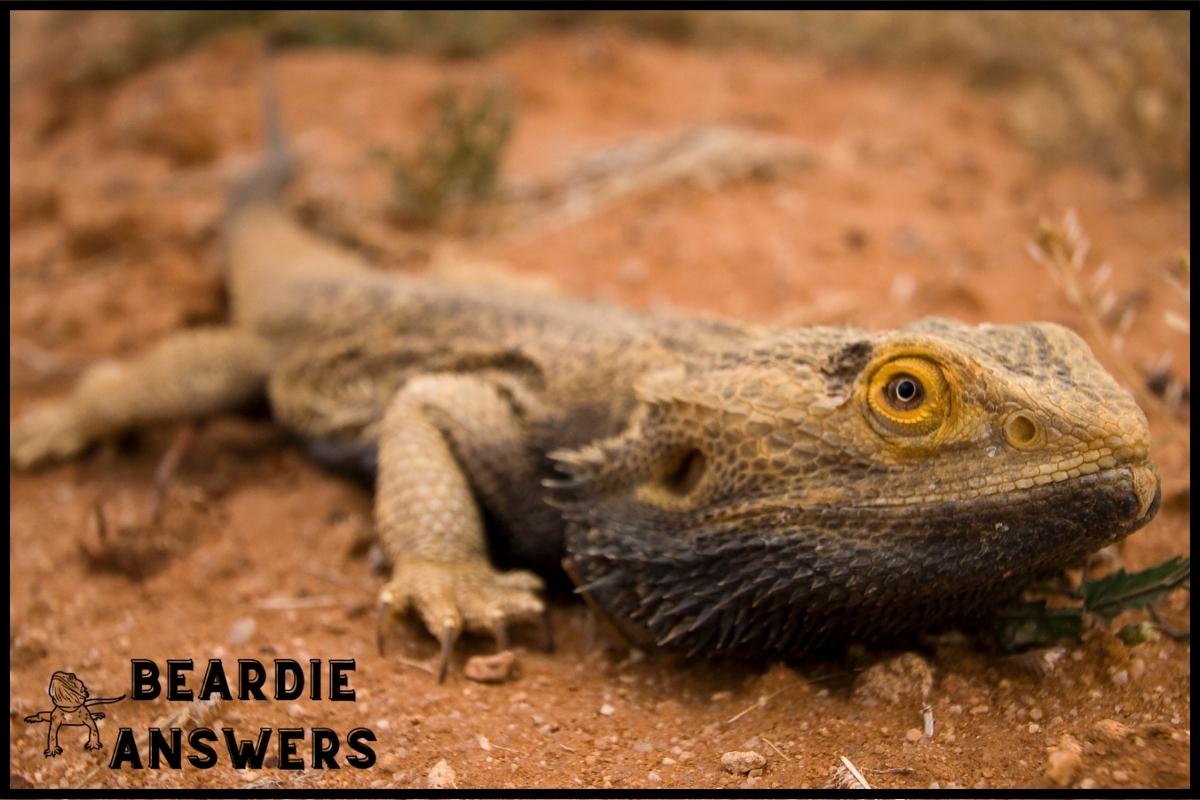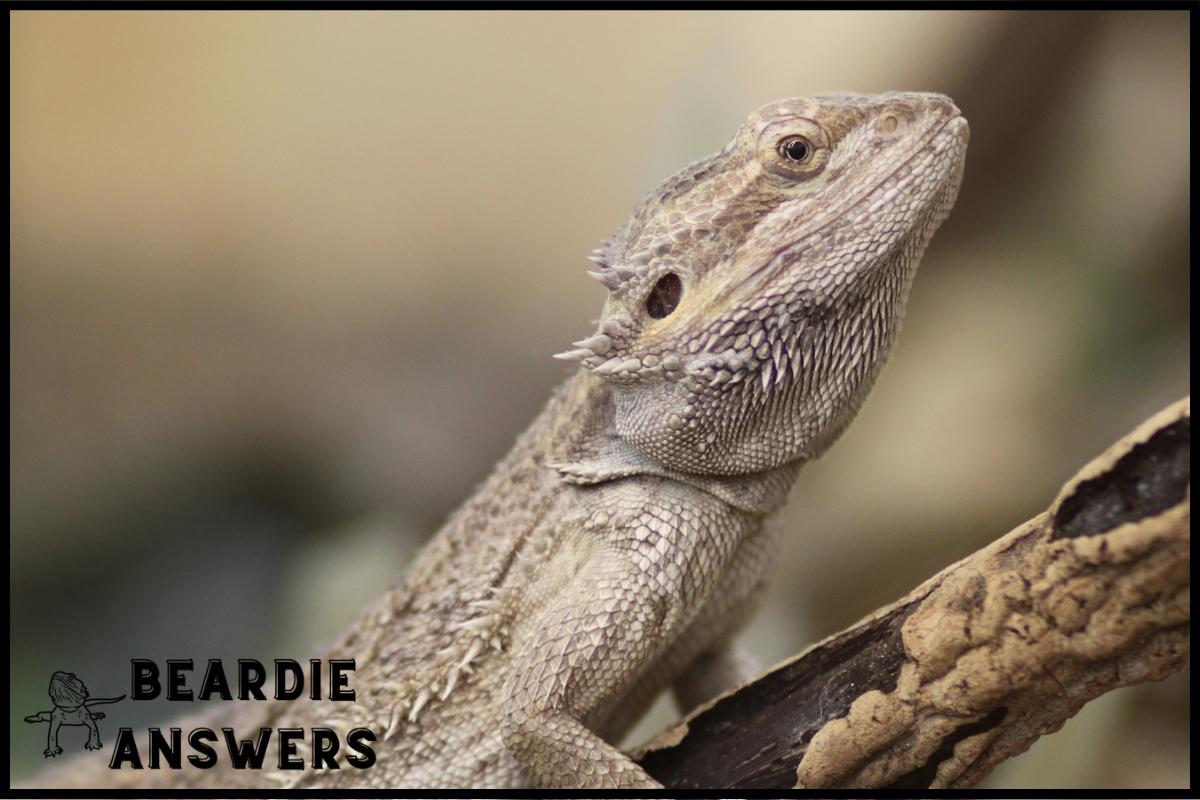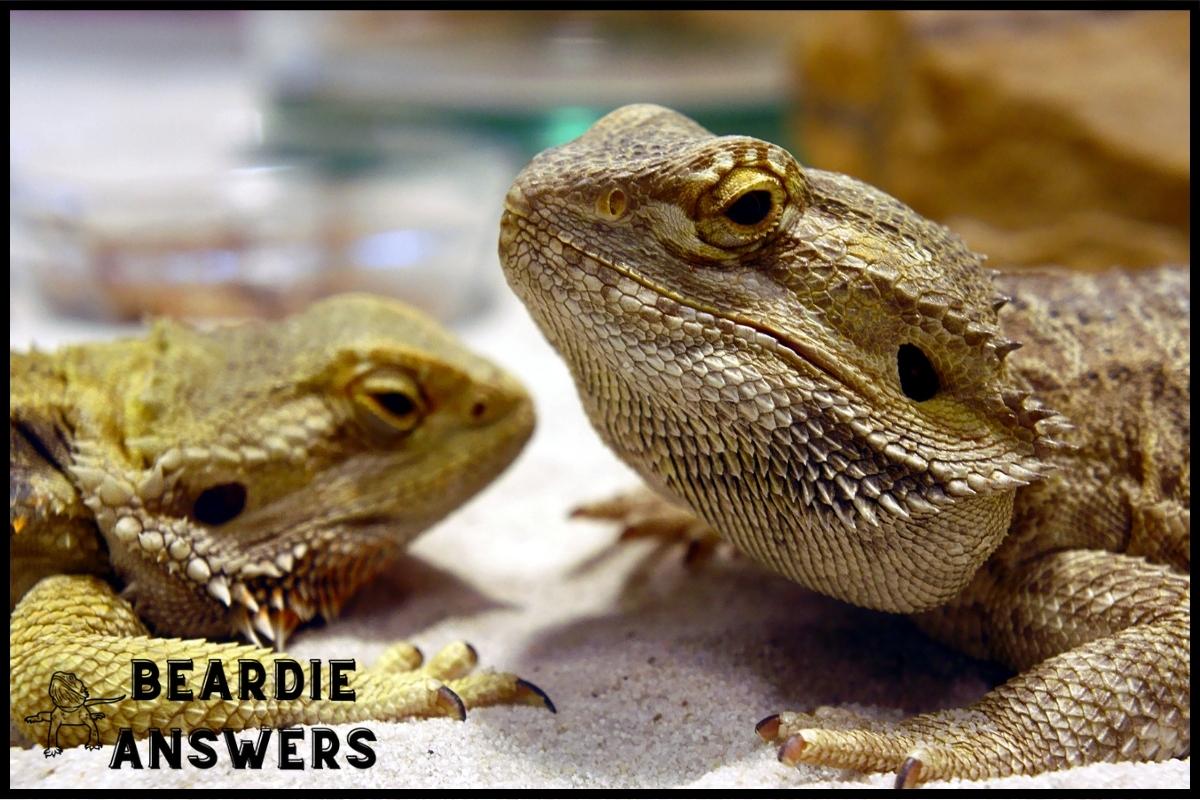Creating a comfortable environment for your bearded dragon thrive in is key to their overall health and happiness. When selecting items for their cage, there are several things that bearded dragons like. These include hammocks for climbing, live or fake plants, branches and rocks, and a basking spot. All of these items will help create a stimulating environment that encourages activity and exploration. Be sure to keep these things in mind when setting up your bearded dragon’s cage!
What You'll Learn
What Bearded Dragons Like in Their Cage
Hammock For Climbing
Bearded dragons love to climb and explore their environment, so a hammock is a great addition to their cage. Hammocks come in a variety of materials, including mesh and non-mesh designs, and can be hung at different heights for your pet to jump onto.
If your bearded dragon is feeling adventurous, you can also give them vines to climb on. Special hammocks made just for reptiles are also available in pet stores, so you can find one that your bearded dragon will love.
A Basking Spot
Bearded dragons need a basking spot to regulate their body temperature. This should be a place in the cage that is warm and dry.
You can create this spot by providing a basking lamp and ensuring that the basking surface is well insulated. By placing the basking spot at one end of the cage, you will create a thermal gradient, allowing your lizard to determine his own preferred temperature.
You can also provide an object for your bearded dragon to perch upon, such as a piece of driftwood, suitable rocks or stones, tree limbs, bricks, or even a special basking rock made specifically for bearded dragons. This will provide your pet with a comfortable place to rest and soak up the warmth.
Live or Fake Plants
Live plants are a great addition to a bearded dragon’s habitat. Prickly pear cacti, aloe vera, and edible herbs are all safe options for beardies to consume.
Aloe vera also works as a great decor piece for the tank, and its size can be controlled by trimming it as needed.
Wood is also an excellent heat insulator for colder areas. These plants help create a natural looking environment for your bearded dragon, with plenty of places to explore and hide.
Be sure to avoid toxic plants or anything that could become a choking hazard.
Branches and Rocks
Bearded dragons need plenty of branches and rocks in their cage to provide them with places to climb, hide, and bask. Sandblasted pieces of driftwood make a fantastic climbing perch for your bearded dragon.
These are particularly useful in the basking area for the bearded dragon to be able to bask in the sun safely.
You can also use larger rocks, like cork bark or slate, to provide a more secure climbing surface. Make sure the branches and rocks are securely placed in the tank so they don’t fall and injure your pet.
These items should be easy to clean and made from solid material that is safe for your bearded dragon.
What Bearded Dragons Need in Their Cage
Bearded dragons need more than just a spacious and comfortable environment to thrive. To ensure their health and well-being, they must have the proper substrate, temperature and lighting, hiding places, and appropriate accessories and furniture in their cage.
Glass terrariums are a popular option as they are sturdy and come with a screen lid that allows for proper airflow. An adult dragon should have at least a 50 gallon tank, and ideally a 75 gallon tank.
A bright light should be placed above the tank to keep them warm and alert, as well as an additional UV light source.
For substrate, it is best to avoid any kind of sand, as it poses a choking hazard. A better option is paper towels or newspaper.
Proper Substrate
When it comes to providing the best environment for a bearded dragon, one of the most important factors is substrate. Substrate refers to the material that covers the bottom of the tank and can range from sand to tile.
Paper towels and newspapers are easy to change, but they may not provide the most natural look. On the other hand, slate and ceramic tiles can absorb heat and be more aesthetically pleasing.
Cage carpet is a great option as it is easy to clean and provides a comfortable surface for your dragon to walk on. Sand can also be used, but it must be non-silica sand from a pet store or box sand from Walmart.
Whichever option you choose, make sure that it is safe for your pet to use.
Proper Temperature and Lighting
Proper temperature and lighting is essential for any bearded dragon’s health and well-being. The hot side of the enclosure should include a basking lamp that should be kept between 95-100°F (35-38°C).
An additional UV light source should be provided to keep your bearded dragon warm and alert. At night, the temperature should drop to 65-75°F (18-23°C).
The use of a digital probe thermometer near the floor of the enclosure will help you monitor the temperatures on both ends.
UVB lights should span 2/3 to 3/4 of the tank to provide optimal lighting conditions. Also, don’t forget to turn off both the heat lamp and UVB at night.
Hiding Places
Hiding places are essential for bearded dragons as they help them feel safe and secure. Providing natural-looking hides, such as logs, caves, and rocks, will give your beardie the perfect place to retreat when they feel stressed or scared.
Exo Terra Reptile Caves have an attractive appearance and provide a great spot for your pet to hide away. If you’re looking for a less expensive option, coconut husk type beddings are ideal for creating a burrow-like habitat outdoors.
Appropriate Accessories and Furniture
When it comes to choosing appropriate furniture and accessories for your bearded dragon’s cage, the possibilities are virtually endless.
Your lizard will need items such as a hammock, basking spot, live or fake plants, branches and rocks to satisfy their curiosity and help them feel comfortable in their new home.
Make sure you are careful when selecting items for your bearded dragon’s cage, as some may be toxic or unsafe.
What to Avoid in a Bearded Dragon Cage
It’s important to be aware of the things to avoid in a bearded dragon cage. While the proper environment and accessories will help keep your beardie happy and healthy, there are some items that can be dangerous.
Toxic plants, unsafe substrates, and overcrowding can all put your pet at risk. So be sure to research any plants or substrates you plan to use before adding them to the enclosure, and make sure not to overcrowd the habitat with too many accessories or furniture. With the right setup and proper care, you can give your Beardie a safe and comfortable home.
Toxic Plants
When choosing the best plants for your bearded dragon’s cage, it is important to remember to avoid those that are toxic.
Dwarf jade plants are not thought to be toxic and are even used in salads by humans, but other plants such as buttercup, caladium, calla lily, catclaw acacia, caster bean, chinaberry, clematis, coral plant, crocus and daphne should all be avoided.
Additionally, rhubarb should never be fed to your bearded dragon as it is highly toxic. Succulents are an attractive choice for the cage, however they can also be toxic if ingested.
Lemon balm is a safe option for your dragon’s cage and can grow up to several feet tall so make sure to keep it trimmed down to the size that you need.
Unsafe Substrates
Loose substrates such as sand, soil, play sand, alfalfa pellets, bark, mulch, wood chips, hay or moss should be avoided and not used in the cage.
Bearded dragons naturally live in a variety of substrates such as sand, pebbles or loamy soil, but these should not be used in captivity.
Wood chips are known for absorbing moisture from the air which can lower the overall tank humidity, and bearded dragons need a low ambient humidity. Instead, look for substrates that are dry and easy to clean, like ceramic, slate or linoleum tiles which will best mimic the natural habitat of a bearded dragon.
Overcrowding
It’s important to remember that too many items in a bearded dragon’s environment can lead to overcrowding, which can cause stress and anxiety for your pet.
Bearded dragons need enough space to move around, bask, and explore. Too many items in a cage can also make it difficult to monitor your pet’s health, since overcrowding can make it hard to see if they are eating properly or if they are sick.
Overcrowding can also make it hard to keep the tank clean and sanitized, increasing the risk of illness and infections.
Key Points
- Setting up the perfect cage for your bearded dragon requires careful planning and consideration.
- A proper habitat should be designed to provide the creature with a comfortable and secure environment that is stocked with the appropriate items.
- Be sure to include a hammock for climbing, a basking spot, live or fake plants, and branches and rocks.
- The cage should include the proper substrate, temperature and lighting, hiding places, and appropriate accessories and furniture.
- To avoid any risks, double check to ensure that no toxic plants, unsafe substrates, or overcrowding are present in your bearded dragon’s habitat.

Hi! My name is Bryan, I am the “one behind the words” here are BeardieAnswers.com. I believe that providing quality care and nutrition is the best way to ensure the health of your pet. Every beardie is special and deserves the best care and attention. If you have questions about your bearded dragon, please don’t hesitate to ask! View My Full Author Page




